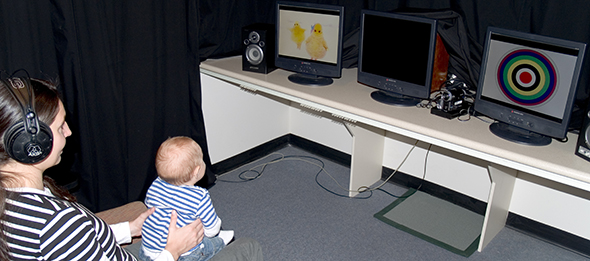BabyLab research: Did you participate in “DEET DOOT”?

Did you recently participate in our "Deet Doot" research program?
The program is lead by MARCS BabyLab researchers Dr Paola Escudero and Dr Karen Mulak.
What we did
Children were shown an object, and heard the name for that object repeated over and over, spoken by a speaker of Australian English or Canadian English. As the video continued, children became used to it and would look less and less at the screen, since they were becoming bored with seeing and hearing the same thing.
At this point, the name of the object would switch to another word that differed only in its vowel, or the word would stay the same. If a switch did occur and children noticed the word (and therefore the vowel) was different, they would become interested again and resume looking at the screen. But if children could not tell that the word was different, they would continue to be bored and not look at the screen, and this would mean they could not tell the difference between the two vowels.
What we found
We found that Australian infants were better at telling the difference between the Canadian vowels than the Australian vowels.
Why we did it
There are several theories describing vowel perception in infants. One theory would suggest that the Australian infants would perform the same with the Australian English and Canadian English vowels, because they would recognise the same vowels are being spoken, just in different accents.
Another theory would suggest they would perform better with their native accent because it's what they hear around them. Another theory suggests that how well they can tell vowels apart depends on how acoustically spaced out the vowels are. Because infants were better at telling apart Canadian vowels, this study supports this theory.
You can find out more about research conducted at MARCS BabyLab by visiting our research page.


